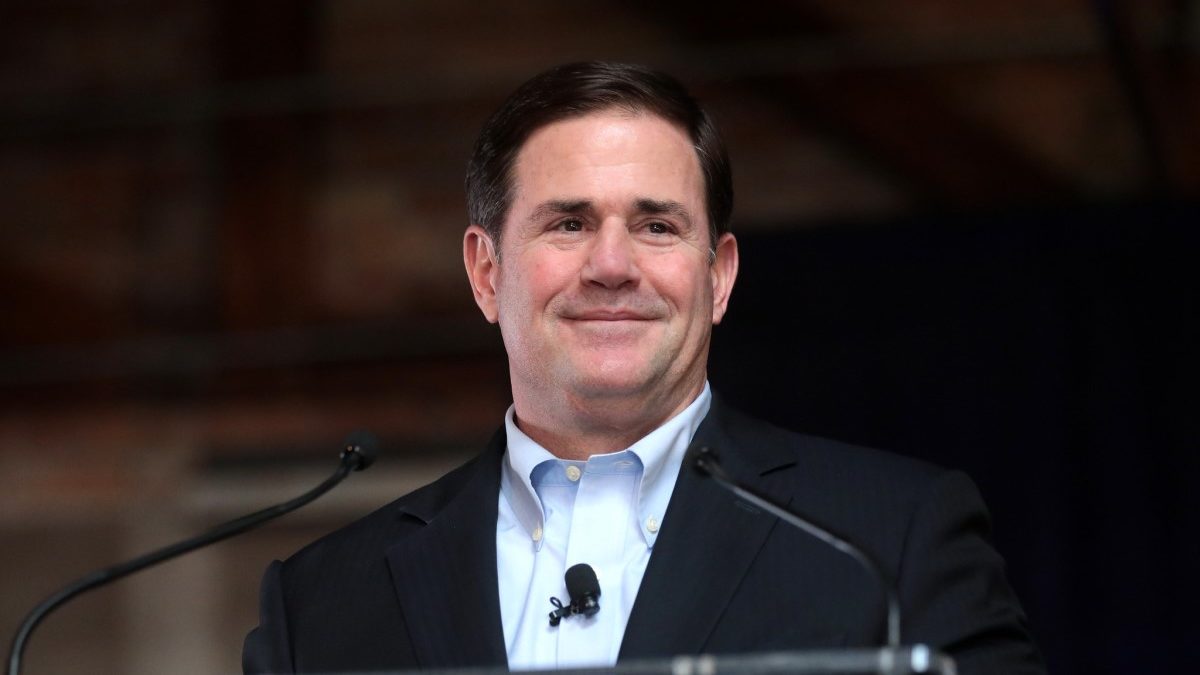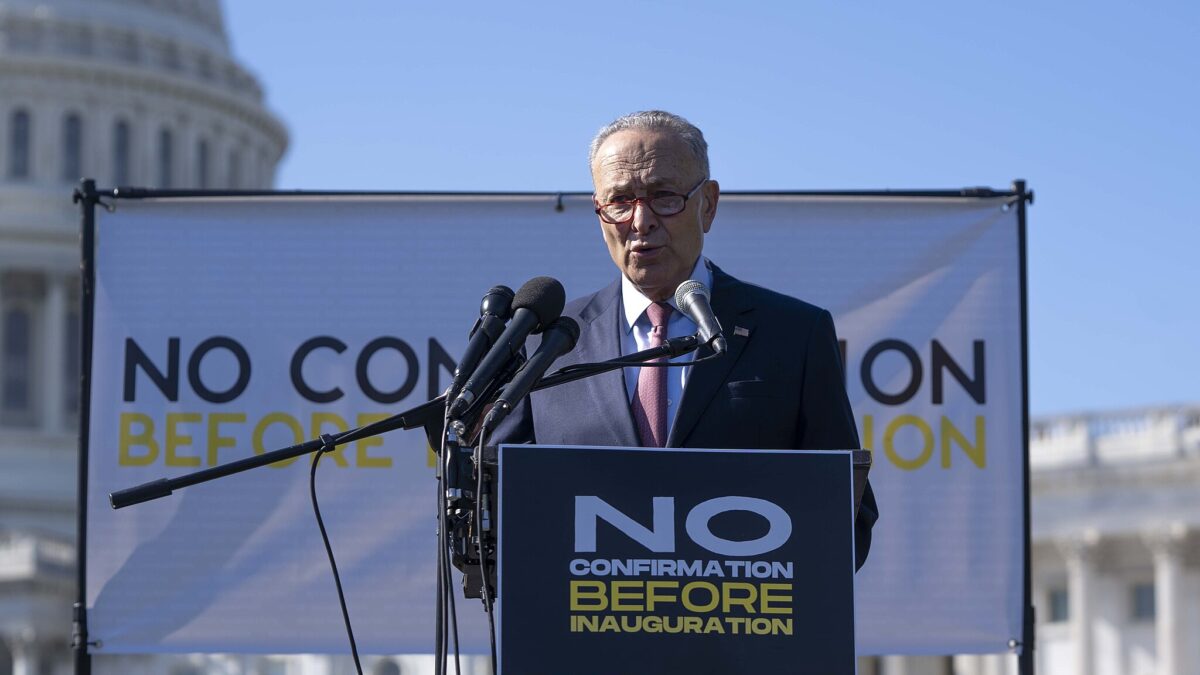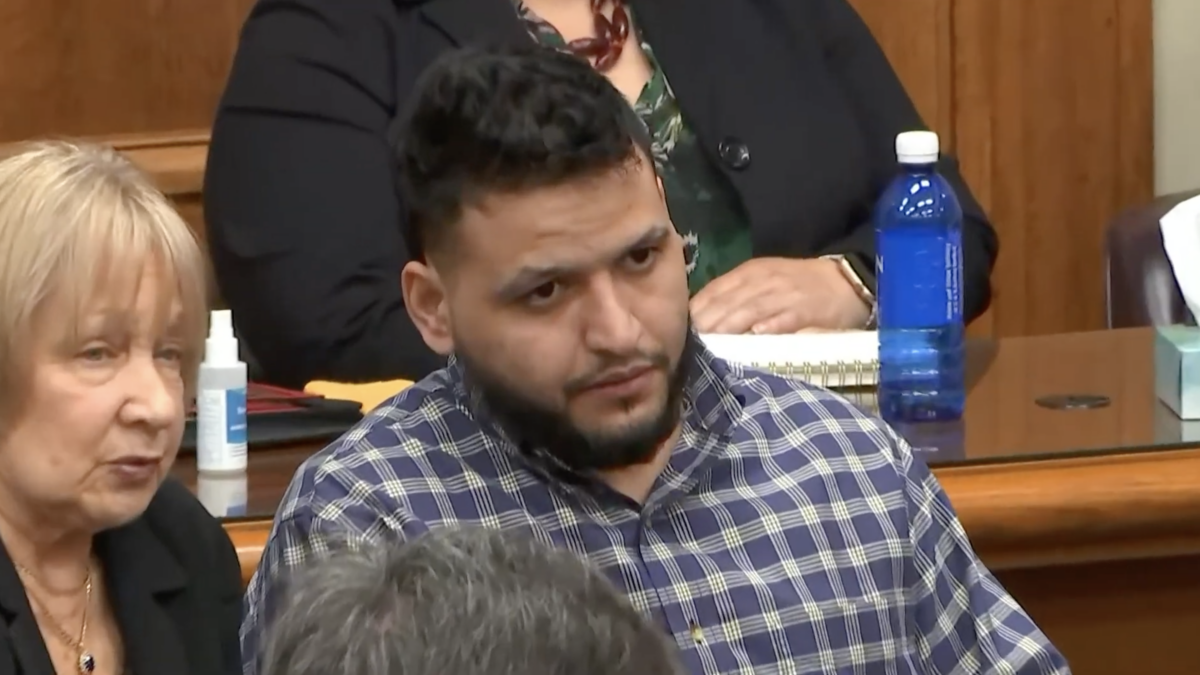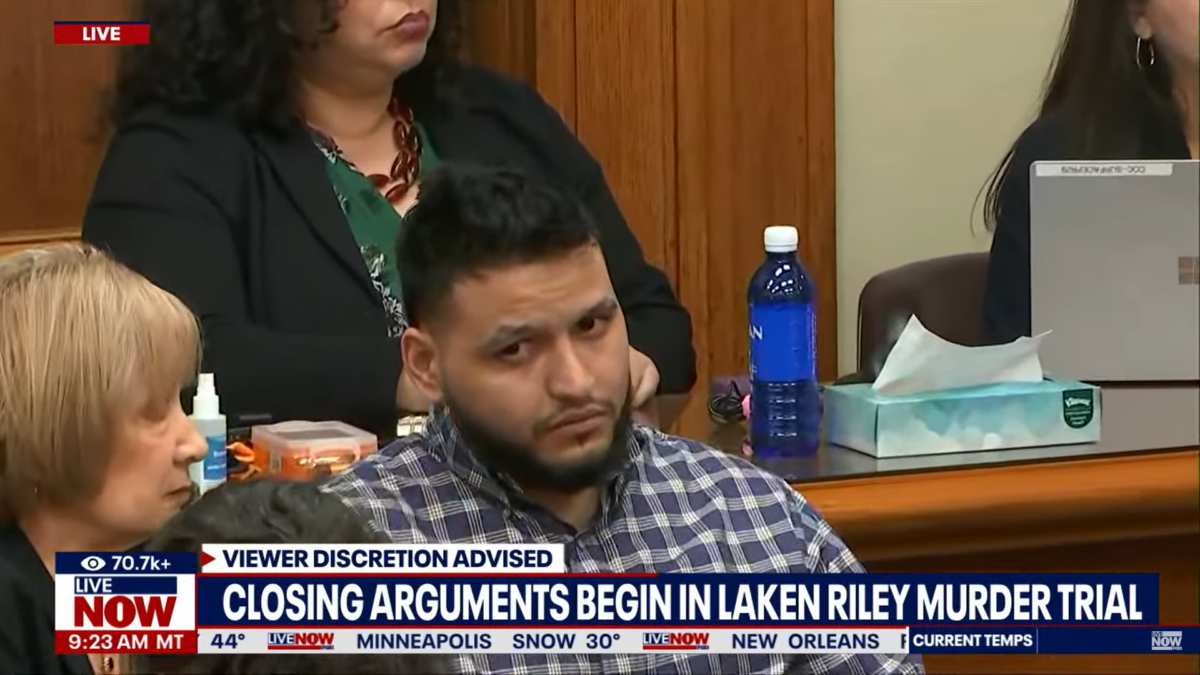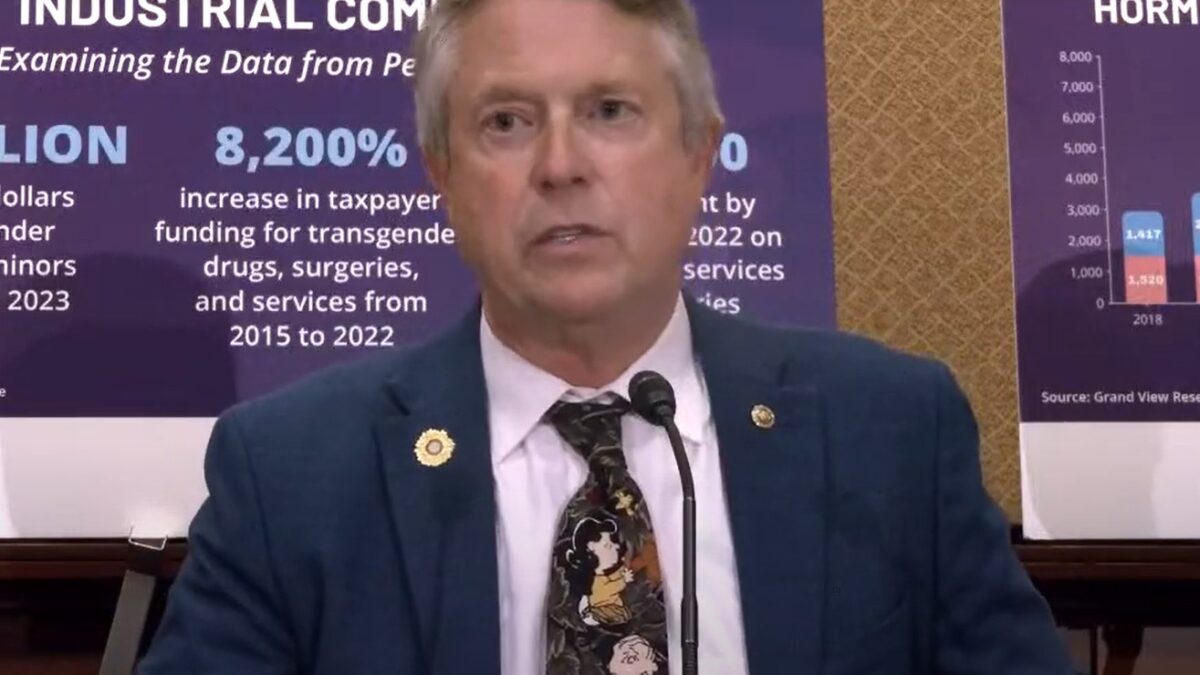On Friday, the U.S. Treasury Department threatened Arizona with a loss of federal Covid-19 funds unless the state eliminates from its grant requirements the condition that schools not mandate masks. The ultimatum came one day after the Supreme Court issued two decisions addressing the authority of federal agencies to mandate vaccines.
The court gave the U.S. Department of Health and Human Services the green light to force workers at Medicaid or Medicare-funded facilities to be fully vaccinated, while staying the Occupational Safety and Health Administration’s de facto vaccination requirement for private employers of 100 or more employees.
While the circumstances may seem unconnected, at their core the situations are the same: They all involve the Biden administration’s abuse of regulatory authority and represent an attack on separation of powers and federalism—even if the Supreme Court saw things differently in the hospital-vaccine mandate case. To understand this reality requires both a backdrop to the situation in Arizona and a deep dive into the federal laws at issue.
Spending Covid Billions
In August 2021, Arizona’s Republican Gov. Doug Ducey announced two new grant programs financed by the “Coronavirus State and Local Fiscal Recovery Funds” (SLFRF) portion of the stimulus plan, officially the “American Rescue Plan,” passed by Congress and signed by President Biden on March 11, 2021.
One of the Arizona programs, the COVID-19 Educational Recovery Benefit program, provides up to $7,000 per student for families whose income levels qualify them. Parents may use the money for transportation to school, online tutoring, child care, or tuition. To qualify, in addition to meeting the income requirements, parents “must demonstrate that their current school is isolating, quarantining, or subjecting children to physical COVID-19 constraints in schools, such as requiring the use of masks or providing preferential treatment to vaccinated students.”
The second Arizona program, branded the Education Plus-Up Grant Program, provided “every K-12 public and charter school the opportunity to receive up to $1,800 per pupil funding.” Schools could only qualify for the Education Plus-Up Grant Program, however, if they left face masking decisions to parents.
At the time Ducey announced these new programs, Arizona law provided that “a school district or charter school may not require a student or teacher to receive a vaccine for COVID-19 or to wear a face covering to participate in in-person instruction,” and the press releases discussing the new grants both referenced the law. However, in November 2021, the Arizona Supreme Court struck down the ban on mask mandates because the Arizona constitution requires every bill to “embrace but one subject and matters properly connected therewith.”
The Arizona Supreme Court’s decision, though, had no effect on the requirements of these two grant programs, with funds still available only for schools that leave masking decisions to parents and parents pulling their children from schools that mandated masks. Moreover, that no-mask mandate law may soon find itself back on the books because, later this week, Arizona Rep. Joseph Chaplik will introduce a new bill to ban mask mandates in schools.
Yank the Mask Protections Or Lose the Money
In any event, the Biden administration took aim at the programs, initially directing the governor’s office to “remediate” the no-mask-mandate requirements of the grants in an October 5, 2021 letter. On Friday, the Treasury Department went further, now telling the governor’s office that:
The State of Arizona must (i) redirect SLFRF funds to eligible uses or (ii) remediate the issues with the Education Plus-Up Grant Program and the COVID-19 Educational Recovery Benefit Program by redesigning the programs to eliminate any elements that are inconsistent with the purpose and requirements of the SLFRF program. Failure to take either step within sixty (60) calendar days may result in Treasury initiating an action to recoup SLFRF funds used I violation of the eligible uses. Treasury may also withhold funds from the State of Arizona’s second tranche installment of SLFRF funds until Treasury receives information that confirms that the issues described above have been adequately addressed.
The Treasury Department’s letter had previously declared Arizona’s no-mask mandate grant requirements “inconsistent with the purpose and requirements of the SLFRF program,” stating that the programs “impose conditions on participating in or accepting a service that undermine efforts to stop the spread of COVID-19 and discourage compliance with evidence-based solutions for stopping the spread of COVID-19.” “The purpose of the SLFRF funds,” the Treasury Department claimed, “is to mitigate the fiscal effects stemming from the COVID-19 public health emergency, including by supporting efforts to stop the spread of the virus.”
‘We Will See You In Court’
After the Treasury Department’s threat, Ducey told a local CBS affiliate, “My message to the Biden administration is, number one, we will see you in court.” On Saturday, the governor’s communications director, C.J. Karamargin, reiterated Ducey’s position, telling The Federalist, “The governor has no intention of backing down.”
The Republican governor will have lots of support, with more than 25 state senators and representatives having previously pushed for Ducey to include, as a grant requirement, that schools leave masking decisions to parents. Those efforts were led by state Rep. Jake Hoffman, who told The Federalist on Saturday that as a legislator he “wasn’t about to sit idly by while Democrat-controlled school boards forced anti-science mask mandates on children.”
In response to the Biden administration’s Friday letter, Hoffman called the Treasury Department’s attempt to coerce Arizona into dropping its no-mask-mandate grant requirement “absurd,” given “there have been no credible studies demonstrating that forced masking of healthy children under the age of 18 has any impact on the transmission of COVID.”
“The Treasury’s blatant disregard for children’s education and health,” Hoffman added, “is yet another in a long line of glaring examples of the Biden administration’s disgusting contempt for hard-working Americans.”
This Is Where the Supreme Court Comes In
With the lines drawn, it likely won’t be long before Ducey sees the Biden administration in court. That is when the Supreme Court’s rulings in National Federation of Independent Business v. Department of Labor and Biden v. Missouri will prove significant.
While those decisions addressed vaccine mandates, the preliminary question for the high court was whether OHSA and HHS had the authority to issue the vaccine rules at issue. In National Federation, in a 6-3 decision, the court concluded OSHA “lacked authority to impose the mandate,” while in Biden v. Missouri, the five-justice majority concluded HHS had the authority to mandate vaccines for workers at Medicare- and Medicaid-funded facilities. (For a detailed analysis of the companion cases, read here.)
What drove the opposite outcomes—if you assume it was not politics or public pressure—was the differing language at issue, with the justices concerned with whether Congress has delegated the authority to the agencies to establish the vaccine mandate rules. Justices Clarence Thomas, Samuel Alito, and Neil Gorsuch added a constitutional concern: Whether Congress could delegate the authority to the agency without violating the principle of separation of powers.
When the dispute between Arizona and the Treasury Department reaches a court, then, the court’s first order of business will be—or should be—an analysis of whether the Treasury Department had the authority to issue the “final rule.” That rule, as Friday’s letter explained, provided that “a recipient may not use SLFRF funds for a program, service, or capital expenditure that includes a term or condition that undermines efforts to stop the spread of COVID-19.”
Can Treasury Make the CDC Health Czar?
The final rule in fact went beyond that generic statement, declaring that “a program or service that would . . . discourage compliance with the recommendations and guidelines in CDC guidance for stopping the spread of COVID-19 is not a permissible use of SLFRF funds.” “In other words,” the Treasury Department’s rule proclaimed, “recipients may not use funds for a program that undermines practices included in the CDC’s guidelines and recommendation for stopping the spread of COVID-19.”
To illustrate, the Treasury Department’s final rule stated that a program that required an entity “not to use practices in line with CDC guidance as a condition of receiving funds,” such as requiring the recipient to “abstain from requiring mask use of employee vaccination as a condition of receiving SLFRF funds,” would not qualify for funding. The final rules further noted that, under federal law, the Treasury Department may recoup funds from states that violate the terms of the federal grant.
While Congress provided the secretary of the Treasury authority to recoup funds used in violation of the governing provisions of the SLFRF, the more basic question is whether Congress authorized the Treasury Department to promulgate regulations that prohibit states from adopting a requirement that, to qualify for funding, schools (or businesses) not mandate the wearing of masks.
Is This a Health or a Finance Bill?
In considering whether the Treasury Department had the authority to issue this final rule, a court will likely assume that masks do in fact “stop the spread” of COVID, even though that question is disputed. A court will instead begin with the statutory language of the SLFRF, which appropriates more than $200 billion to state and local governments.
That act expressly provides the appropriate “use of funds” is for states to cover costs “to respond to the public health emergency with respect to . . . COVID-19 or its negative economic impacts,” “to respond to workers performing essential work during the COVID-19 public health emergency,” “for the provision of government services to the extent of the reduction in [state] revenue,” and “to make necessary investments in water, sewer, or broadband infrastructure.”
Congress explicitly provided that SLFRF funds could not be used to offset reductions in state tax revenue caused by retroactive changes in state taxes and that states could not deposit the funds into pension fund accounts.
While in its regulations the Treasury Department stated that “a primary purpose of the SLFRF in the ARPA is to support efforts to stop the spread of COVID-19,” the four provisions of the SLFRF that the Treasury Department cites in its Final Rule as supporting that purpose, Sections 602(a)(1), 603(a)(1), 602(c)(1), and 603(c)(1), make no mention of the SLFRF seeking “to support efforts to stop the spread of COVID-19.” Rather, the plain language of those sections sets forth a different purpose: “to mitigate the fiscal effects stemming from the public health emergency with respect to the Coronavirus Disease (COVID–19).”
Moreover, if Congress had as a “primary purpose” of the SLFRF to “support efforts to stop the spread of COVID-19,” it could have easily stated as much, as it did in other portions of the ARPA. For instance, an additional $7.6 billion was appropriated for HHS in Section 2601, with those funds to be used for, among other things, “activities necessary to mitigate the spread of COVID–19.” In contrast, the word “spread” does not even appear once in the entirety of the SLFRF.
Congress did, however, provide the Treasury Department the general authority “to issue such regulations as may be necessary or appropriate to carry out” its responsibilities under the SLFRF. The question for a court, then, will be whether that general delegation authorizes the Treasury Department to issue regulations purporting to advance a purpose Congress did not provide for the SLFRF, namely “to stop the spread of COVID-19.”
Treasury Is Out of Bounds
Arizona has a strong argument that the Treasury Department has overstepped its authority, first because Congress expressly provided the SLFRF was “to mitigate the fiscal effects stemming from the public health emergency with respect to the Coronavirus Disease (COVID–19),” and second because Congress made no mention of stopping the spread of COVID in the SLFRF. Third, Congress expressly exempted from the allowable uses of the funds two types of costs, and neither of the exemptions involved how the states approached masking mandates.
Fourth, as noted above, elsewhere in the ARPA, Congress expressly identified mitigating the spread of COVID-19 as a purpose of the appropriated funds, demonstrating that, had Congress intended to limit the funds to programs that followed CDC guidelines, it would have said so. Fifth, given that the CDC guidelines are not mandatory and are ever-changing, a court may be hesitant to allow the Treasury Department to invent a workaround to, in effect, enforce CDC guidelines through the SLFRF.
Whether the courts—or, rather, Justices John Roberts or Brett Kavanaugh—will agree with Arizona or the Treasury Department is anyone’s guess, but the issue is larger than this case, as Justices Thomas, Alito, and Gorsuch made clear last week.
The fight between Arizona and the Treasury Department points to the larger problem of federal agencies acting as lawmakers in violation of our constitutional separation of powers, which granted Congress that authority under Article I. The Treasury Department’s stance is also an offense to federalism, with the federal government seeking to trump state policy decisions.
Arizona has made clear that it is up for that important fight. The question is: Will the Supreme Court be poised for battle this time?
